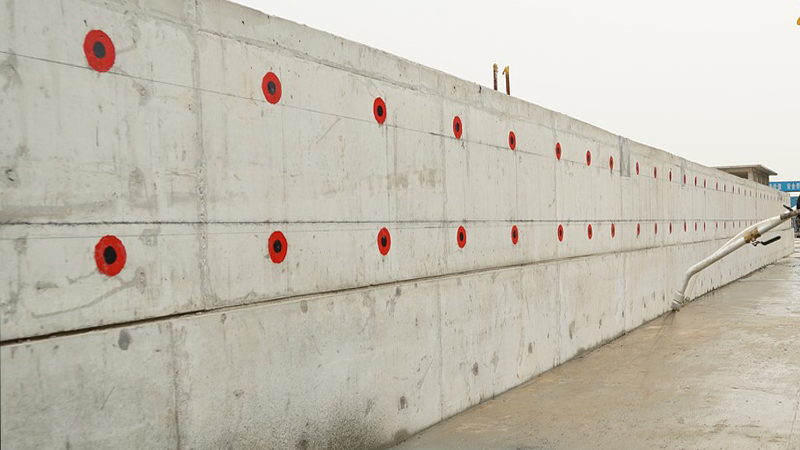
time:2023-10-05
Prevention and control measures (1) A detailed construction plan should be prepared for roof waterproofing and strictly implemented after approval.(2) The flashing height of the waterproof layer shall not be less than 300mm. The end of the rolled waterproof layer should be fixed in the groove of the parapet. The end should be fixed with anti-corrosion wood strips and covered with metal strips. The nail distance should not be greater than 450mm.(3) During the construction of each waterproof layer or air barrier layer on the roof, flexible waterproof materials should be used for flashing at the protruding roof pipes and structures higher than the roof, with a height of not less than 250~300mm.(4) When making a rigid protective layer of fine stone concrete, the strength grade shall not be less than C30, and the spacing between gratings shall not be greater than 3m.Analysis of the causes of basement leakage is that the waterproof coating is not firmly bonded or has been damaged; the quality of water flat welding of some wall screws does not meet the requirements; the construction quality is not up to standard, and some concrete joints are not dense after secondary vibration.Prevention and control measures
(1) The seepage parts should be cleaned and treated with cement-based materials (cement-based materials are a series of building materials produced using cement as cementing material, such as mortar, concrete, grouting materials, and their products).
(2) Waterproof coatings are used to plug leaks; after cleaning, the water seepage parts are treated by using water-emulsion neoprene rubber asphalt waterproof coatings and other fiber-reinforced materials.
(3) After the cement-based penetrating crystalline waterproof coating is painted, it should be cured with spray water in time, and the curing time should not be less than 3 days.
Analysis of Causes of Exterior Wall Leakage The main causes of exterior wall leakage are that the adhesion between the exterior wall bricks and the primer mortar is insufficient to form hollows, the joints of the facing bricks are not dense, and blisters and cracks appear, causing leakage in the exterior wall.Prevention and control measures
(1) Clean the plaster base and keep it moist. Barbed wire must be hung at the intersection between the beams and columns and the masonry, with a width of not less than 300mm. The base of the concrete should be roughened with an interface agent.
(2) Pay attention to the slope and dripping of window sills and overhangs, and note that finished plastic drip troughs must be installed on the tops of doors and windows.
(3) When constructing the window sill, the base layer must be cleaned and moistened, and the window sill must be poured with fine stone concrete, especially the outer window sill. The window sill should be high on the inside and low on the outside.
(4) Before plastering the outer walls, the wall screw holes in the peripheral walls and fences should be sealed with waterproof mortar mixed with an appropriate amount of expansion agent using a special spray gun.